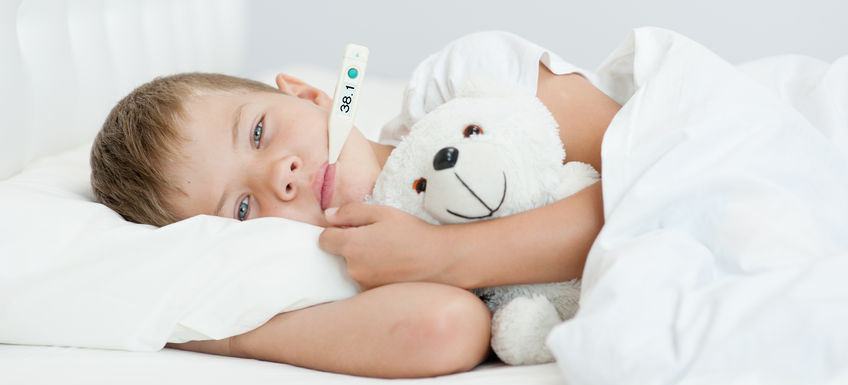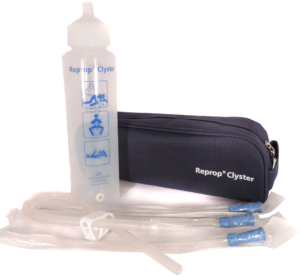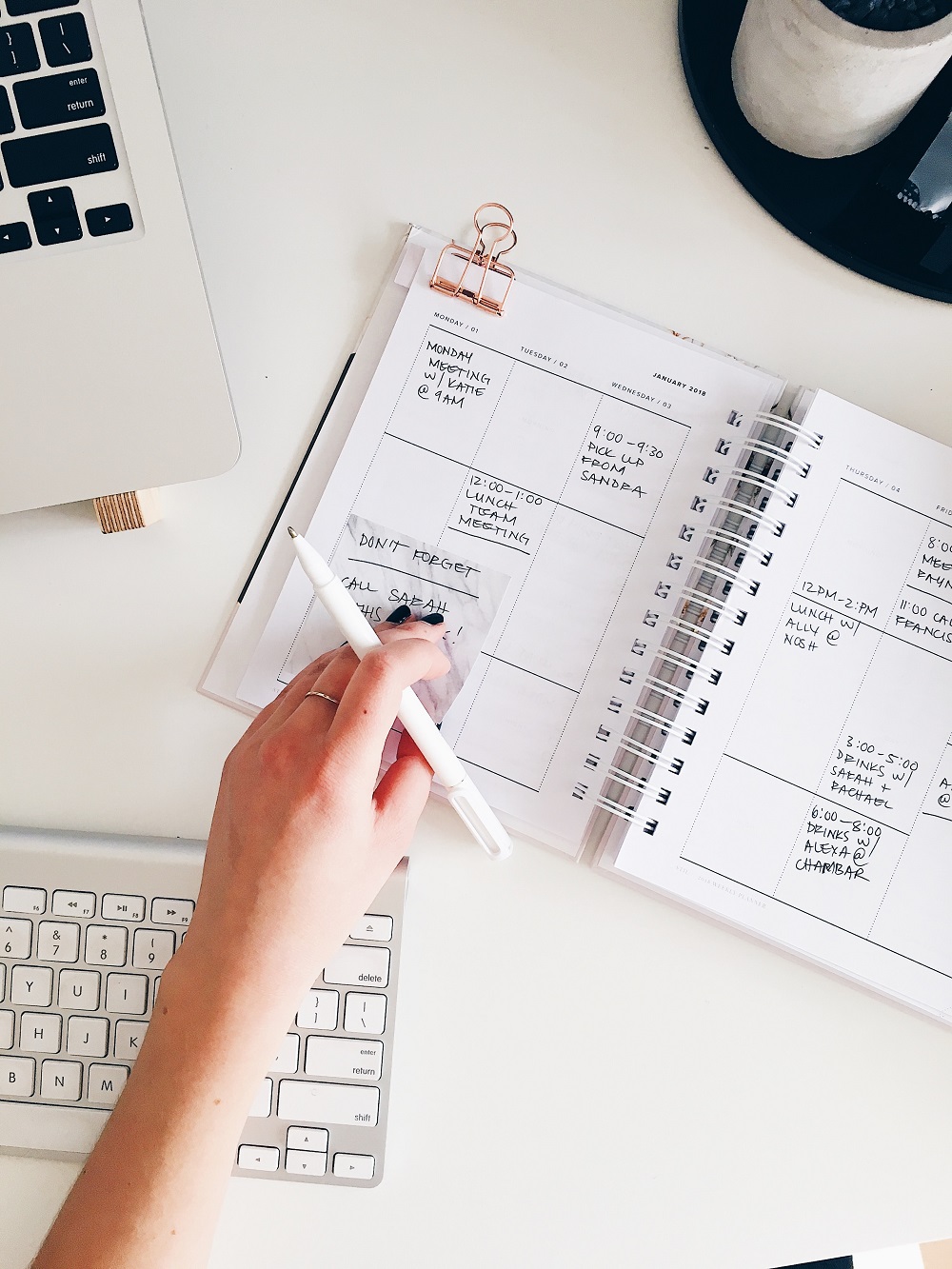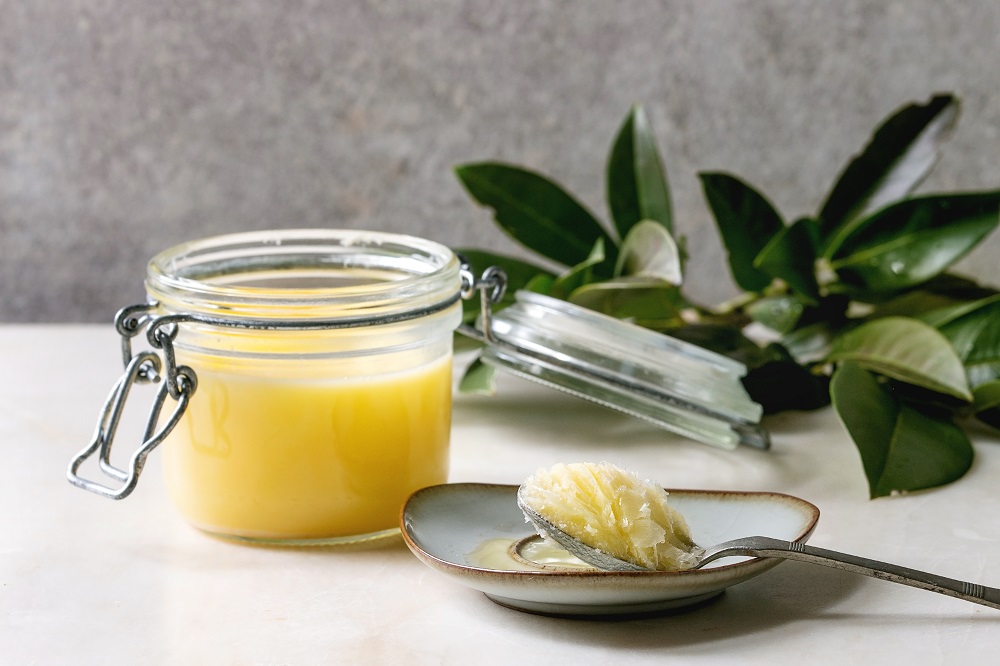Fever - friend or foe?
February is, as almost every year, the month with the most febrile infections. The flu wave is rolling! Few people are aware that fever itself is not an illness, but only a symptom that signals the body's defensive struggle against viruses or bacteria.
 Before the invention of modern antipyretics such as aspirin, Parkemed, ibuprofen and co., fever was considered an important sign of a patient's defences that should not be suppressed, but only brought under control. Of course, it is not pleasant to have a high fever and parents worry when their children have a fever. Nevertheless, from the point of view of regulative medicine, it is important not to suppress the fever with medication, but to support the body in its defence struggle and detoxification in order to automatically keep the fever under control.
Before the invention of modern antipyretics such as aspirin, Parkemed, ibuprofen and co., fever was considered an important sign of a patient's defences that should not be suppressed, but only brought under control. Of course, it is not pleasant to have a high fever and parents worry when their children have a fever. Nevertheless, from the point of view of regulative medicine, it is important not to suppress the fever with medication, but to support the body in its defence struggle and detoxification in order to automatically keep the fever under control.
Positive effect of fever
When, due to a temporary state of weakness, the body is flooded with viruses or bacteria, an infectious disease develops. Regardless of whether flu or measles viruses, typical bacteria for angina such as streptococci or other germs spread in the body, the course of the defence struggle is always similar. When foreign germs spread in the body, the immune system is stimulated: Proteins and defence cells must be produced by the body to stop the invasion of foreign germs. Fever plays a dual role in this process:
- Fever strengthens the body's immune response.
- Fever "paralyses" the germs. The higher the fever, the weaker the germs become and can no longer multiply!
Due to these two effects, fever shortens every illness!
Regulate fever, do not suppress it
Every febrile illness is unpleasant. The higher the fever, the greater the discomfort. However, this discomfort is not only caused by the fever, but mainly by the disease toxins produced by the germs. Therefore, it is important to support the body in eliminating the disease toxins. This is done primarily through simple cooling measures such as compresses, through elimination measures such as enemas and through bitter herbal remedies that have a mild cooling effect.
How high can a fever go?
A high fever is frightening. Parents also fear febrile convulsions in their children. It is important to know that a maximum of 4% of children convulse when they have a high fever. These cramps last a few minutes at most and do not leave any late effects. Fever cramps can be avoided with certainty if one begins in good time with expectorant measures that lower the fever and relieve the body. High fever consumes a lot of energy and tires the body. The perception of fever varies greatly from person to person. Some people feel deathly ill at a body temperature of 37.5°, others are lively at 39°. It is known from fever research that even prolonged temperature increases above 40° do not leave any consequential damage. No matter how high the fever is, it is a symptom of illness and an indicator that the body needs relief. That is why you should start expectorant measures as soon as possible if the body temperature rises above 37° due to an infection. In this way, you can avoid a prolonged weakening due to a high fever.
Natural measures for fever
- Enema
- Bitter medicinal plants
- Cooling compresses
- Alkaline powder
Up to 90% of the immune system is located in the intestines. That is why the gastrointestinal tract in particular needs to be supported when it comes to infections. For most people, infections lead to constipation. It is believed that this is because the illness causes a loss of appetite. However, the main reason for the temporary paralysis of the intestines is the disease toxins that the body stores temporarily in the intestines. These disease toxins not only stimulate a further increase in fever, they are also the cause of the accompanying complaints of fever: loss of appetite, headache, muscle pain and pain in the limbs. These complaints are drastically reduced in a very short time when relief comes through bowel evacuation. That is why a watery enema is the first and most important measure to help infants, children and adults overcome the infection quickly.
Enema:
An enema should be given on any day with a fever. Children need the help of their parents for this. Fill an enema device with 400 ml of water at body temperature and add 1 tablespoon of salt. For toddlers and children, take between 125 and 250 ml of water and 1 to 2 teaspoons of salt, depending on their age and size. I recommend the  Reprop Klyster as a device. It is very easy to use and is just as suitable for self-application as it is for use by an assistant. You can find a short film about the application HERE. Before use, the anus must be well lubricated (oil, skin cream). It is best to do this while lying on the left side with the right leg drawn up. The intestinal tube should be inserted approx. 4-5 cm for children, 7-10 cm for adults. Allow the liquid to flow slowly into the tube. If there is a strong urge to defecate, pull out the tube. If the urge to defecate does not come immediately, hold water for a few minutes and walk a little, do not hold back forcibly. The aim of the enema is to produce a strong, liquid and pulpy stool. If this does not happen, repeat the enema after about 30-60 minutes, possibly with twice the amount of salt. The enema has been successful if plenty of stool (and water) has been emptied and there is some relief afterwards. In most cases, the fever goes down considerably (0.5 to 2°), headache, backache and aching limbs become more bearable or disappear.
Reprop Klyster as a device. It is very easy to use and is just as suitable for self-application as it is for use by an assistant. You can find a short film about the application HERE. Before use, the anus must be well lubricated (oil, skin cream). It is best to do this while lying on the left side with the right leg drawn up. The intestinal tube should be inserted approx. 4-5 cm for children, 7-10 cm for adults. Allow the liquid to flow slowly into the tube. If there is a strong urge to defecate, pull out the tube. If the urge to defecate does not come immediately, hold water for a few minutes and walk a little, do not hold back forcibly. The aim of the enema is to produce a strong, liquid and pulpy stool. If this does not happen, repeat the enema after about 30-60 minutes, possibly with twice the amount of salt. The enema has been successful if plenty of stool (and water) has been emptied and there is some relief afterwards. In most cases, the fever goes down considerably (0.5 to 2°), headache, backache and aching limbs become more bearable or disappear.
Bitter medicinal plants
According to Ayurveda, all foods with a bitter taste have a cooling effect on the mind-body system. In the classical texts, the herbal mixture Triphala (MA 505) is mentioned first among the bitter fever-reducing medicinal plants. Triphala consists of the three fruits Amalaki, Bibhitaki and Haritaki and is available in the form of pressed herbs (1g per tablet MA 505) and as powder. The bitter substances contained have a slightly cooling effect on the heat organ liver and activate the intestinal movement so that the disease toxins can be eliminated more quickly.
Use: for any febrile infection 1g (one tablet MA505) approx. every 2 hours. For children: either mix ¼ teaspoon of powder with half a teaspoon of honey and administer undiluted or stir ½ teaspoon of powder + 1 teaspoon of honey into 1/8 litre of lukewarm water and drink in sips (also as a vial) Triphala (MA 505) should definitely be used in addition to an enema in case of fever!
Cooling compresses
The best-known "cooling poultice" is the calf poultice, commonly known as the "vinegar poultice". It is especially popular for children, but equally effective for adults. IMPORTANT: the cooling calf wrap may only be applied when the patient/child has warm feet!!!! Preparation: well ventilated room, warm duvet up to the nose! A container with 1 litre of very cold water, stir in 2-3 tablespoons of vinegar. Procedure: Dip 1 pair of knee socks or 2 tea towels in the cold vinegar water, wring out well and quickly put them on or wrap the legs with them, dry towels over them, cover tightly. If the socks/towels are felt to be too hot after 10-20 minutes, the same procedure can be repeated several times. With this measure, the fever goes down a little, the sensation of heat in the body and the headache become much more bearable.
Alkaline powder
Every inflammation, every infection is stress for the body. Intensive care physicians know that the most important measure in cases of severe stress is the intake of alkaline fluids. Every inflammation produces acids in the body that challenge the acid-alkaline balance. When the body is over-acidified, it is generally weakened and limited in its ability to regulate. This is to the advantage of hostile viruses and bacteria. Alkaline powder, taken as a drink or administered as an alkaline bath (foot or full bath), helps to increase the body's "alkaline reserves" again. This puts the body in a much better position to buffer the acidic metabolic products that are produced during the defence struggle and through the increased release of stress hormones, thereby quickly restoring normal body strength. Procedure: Add 1 measuring spoon of alkaline powder to 1 glass of water (warm or cold, depending on the patient's temperature sensation) several times a day and drink after foaming. Alkaline baths can be taken as full or partial baths. The salts contained in the alkaline powder are very well absorbed through the skin. Pour the alkaline powder into the warm or cool bath water according to the instructions and bathe for 10 minutes.
Summary
Don't be afraid of fever! But: when an infection starts, with or without fever, quickly do as much as possible to relieve the body and support it in its defence against germs. With the 4 measures explained here, you are very likely to overcome any infection - whether bacterial or viral - in the shortest possible time! Do not be discouraged by the supposed hurdle "enema"!!! By implementing the 4 recommendations, you will avoid unpleasant consequences such as long-lasting catarrhal complaints or delayed convalescence with fatigue and reduced performance. On the contrary: you use your flu to get rid of old burdens and return to everyday life fitter than ever!



We look forward to your feedback!